Composting toilets are the holy grail of recycling. They turn human waste into compost and return the nutrients we don’t digest back into the ground. But if you’ve become accustomed to using a bidet instead of toilet paper, you might be left wondering if a composting toilet is right for you.
Can you use a bidet with a composting toilet? You can use a bidet with a composting toilet as long as you have a suitable method for dealing with the extra moisture. The best way of doing this is to have a separate ‘bidet toilet’ reserved for cleaning up. Portable bidets are easy to use and don’t need to be hooked up to a running water supply.
If you’re wondering what composting toilet you should buy, why not look at my guide to the best composting toilets.
The problems with using a bidet with a composting toilet
There are two potential issues that could arise using a bidet with a composting toilet.
The first one is how to deal with excess water. Composting toilet systems need to stay dry to minimize smells. If the waste is too wet, then it starts decomposing anaerobically.
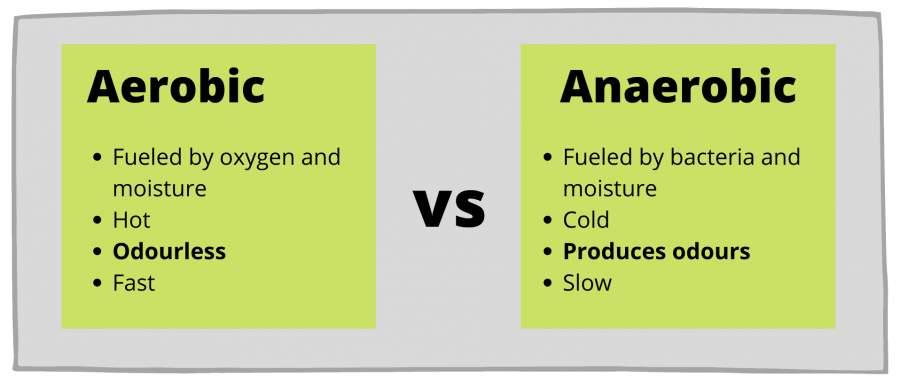
Anaerobic decomposition smells terrible and can attract flies.
Introducing a bidet to your composting toilet means introducing more water, so you need to make sure your set up can deal with the extra water. A good tip is to measure how much bidet water you use over a few days so you have an idea of how much excess water you’ll be putting into your system.
The second problem is how to supply the bidet with water. Some (not all) bidet systems require a water supply, so you’ll have to take this into account when picking the type of bidet you want to use.
Luckily there are ways around both of these problems, especially if you’re willing to get a little creative!
How to use a bidet with a composting toilet
I’ve come up with three different ways you can make a bidet work with a composting toilet. They all have inventive ways of dealing with the excess water, so your system will run as odorlessly as ever.
Method 1: Get a composting toilet with a urine diverter
This is the simplest solution. If your composting toilet has a built-in urine diverter, then the bidet water will go the same way as the urine and end up in the liquid waste container. You don’t need to worry about extra moisture in the solids compartment.
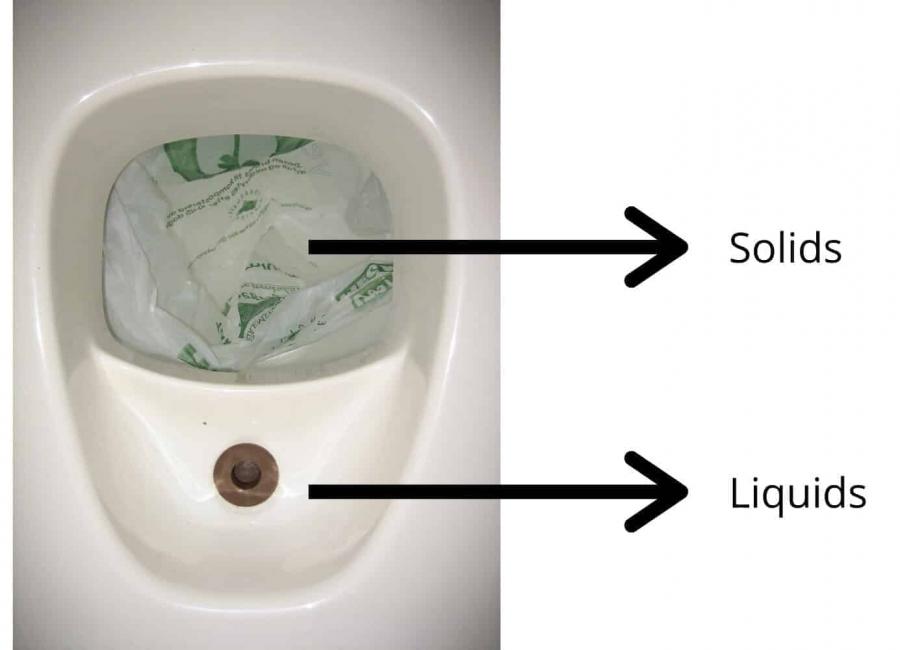
If your toilet doesn’t have a built-in urine diverter, you can easily make your own. Or you can buy a ready-made one.
However, there are two disadvantages to doing this.
- You’ll have to empty the urine container more often
- You can no longer use the urine
A big plus of having a urine-diverting composting toilet for many people is that they can use the urine as fertilizer or as an activator for a different compost pile. Urine is commonly referred to as ‘liquid gold’ because it’s so high in nitrogen. If you contaminate your urine with feces, then you severely limit its uses.
Feces is a breeding ground for harmful pathogens, and I would only recommend using the urine/feces mix far away from any water sources or edible plants.
Method 2: Have a separate ‘bidet’ toilet
If you don’t fancy installing a urine diverter or want to keep your liquid gold to use as fertilizer, another idea is to have two toilets. This method is also best for anyone with a composting toilet system that uses a heater/fan to evaporate the urine, e.g. a sun-mar composting toilet.
The original bidet was a separate unit from the toilet, so it’s not a new idea. You keep your regular composting toilet as it is, and install a separate toilet for cleaning.
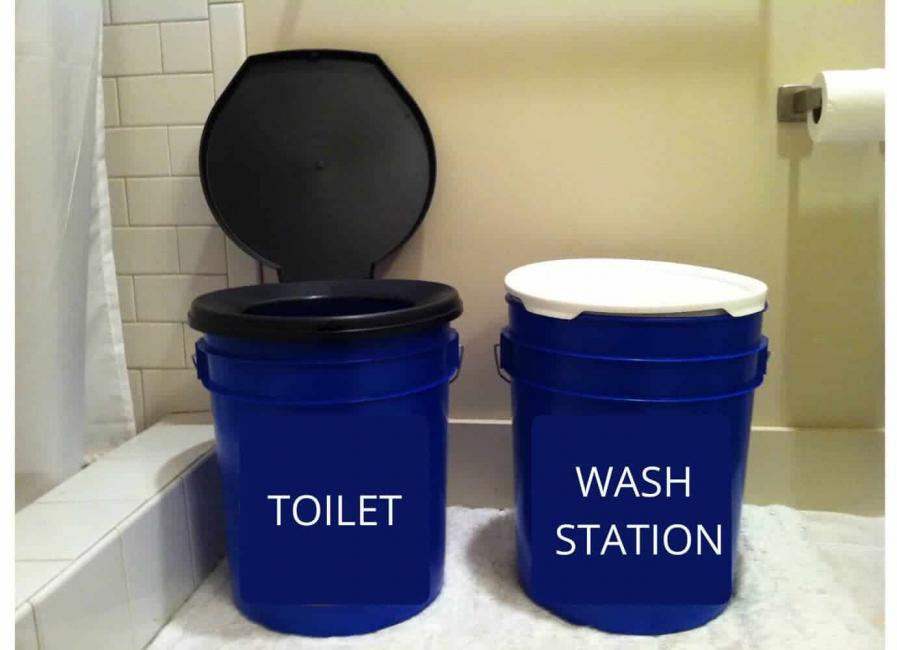
Once you’ve finished your business, you can move over to the bidet toilet and wash yourself there. I would set up a 5-gallon bucket with a toilet seat and then add in a funnel so the water can be funneled into a container. This will make the waste easier to deal with and mean less cleaning.
Interested in learning how to make your own cheap composting toilet? Check out my step by step guide where I recommend a number of budget-friendly DIY toilet options.
Once the container is full you can dispose of it how you normally deal with black water.
One problem you may encounter with this method is space. Lots of people who own a composting toilet are limited on space and it might not be practical or possible to have two separate toilets. In this case, you could consider using the sink or shower as a wash space bearing in mind this would contaminate your greywater.
Method 3: Use extra covering materials
In a traditional bucket system like the one Jen Jenkins uses in Humanure, you use a covering material to soak up any moisture and stop the bin from becoming too wet.
It makes sense that if you’re adding more water, then you can simply add more covering materials to soak it up.
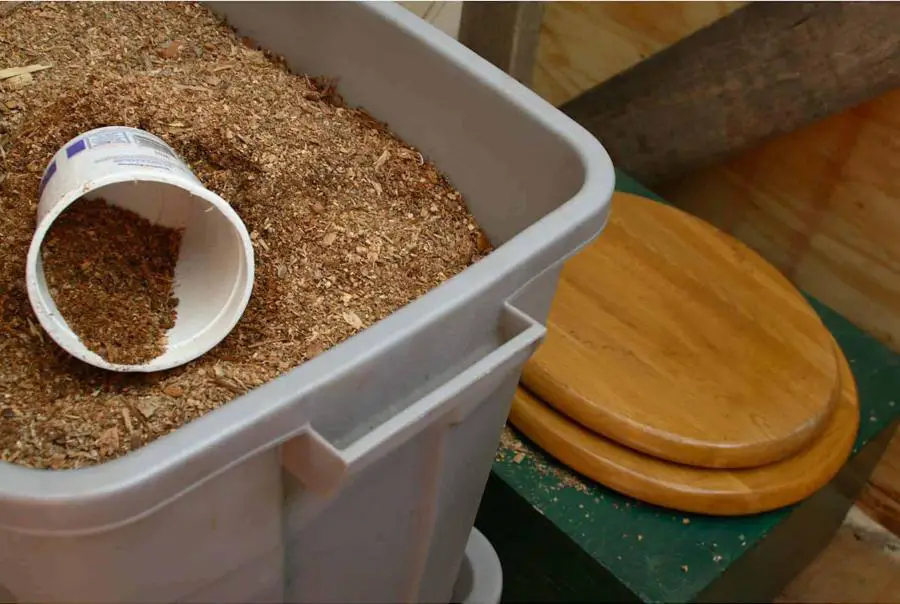
This method is another easy one but beware that by adding more cover materials, your compost will take longer overall to breakdown because of the extra carbon. The container will also fill up a lot quicker.
This method is best if only one person uses the bidet, and you don’t use a lot of water. That way, you don’t need to add too much extra carbon to the toilet.
If you go for this method, you should make sure you’re using a good quality cover material that can quickly soak up moisture. I have a different article covering what the best cover materials are for composting toilets. My top recommendation is coco coir with some diatomaceous earth for fly control.
Types of bidets you can use with a composting toilet
Now you know how to use a bidet with a composting toilet, it’s time to talk about what type of bidet is most suitable. This will depend on your set up in terms of water supply, and also what you want to use the bidet for.
Portable bidet
A portable bidet is useful if you don’t have any way of hooking a bidet up to a water supply.
There are a few different types of portable bidets. The most common one is a squeezy bottle with a spout for a lid, for example, the Brondell GoSpa travel bidet. You fill the bottle up with water from the tap and squeeze it to get the water out.
They’re cheap, easy to use, and you can take the bottle with you when you go out so you’re never without a bidet.
But they aren’t very powerful.
If you like a strong water stream, you might be disappointed with a portable bidet bottle. Battery-operated portable bidets like this Toto washlet are slightly more powerful but still won’t compare to a traditional bidet.
You can also get portable bidets that are like hoses. The spray head is attached to a hose that you can put in a bucket of water. My Porta Wash is pictured below.
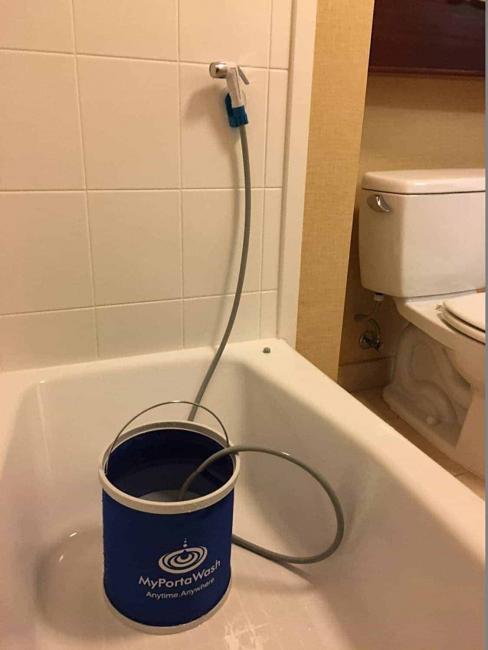
These are great if you want a bit more power than a simple bottle bidet would supply, but don’t want to hook anything up to your main water supply. Just be careful with the bucket that it’s not somewhere where you could knock it over. Collapsible buckets are good if you don’t have a lot of space.
For more information take a look at my guide to the best portable bidets.
The DIY bidet
An alternative to hooking a bidet hose or attachment up to the mains is to use a DIY pressurized sprayer. This method involves some work but is a great way to get a strong water stream without using city water lines.
Garden sprayers designed for spraying crops with compost tea or liquid fertilizer have to cover a lot of ground quickly and use a pressurized spray.

You can remove the sprayer and attach the bidet hose to the spray tank instead. If the tubes are the same size, this will be easy, but if not, you can splice the two tubes together. Make sure the tank is pressurized and you should be good to go.
I’d advise buying either the bidet or the garden sprayer first. That way, when you’re shopping for the other part, you can compare how well the tubes will fit together.
Other ideas for a DIY bidet that involve a little less work are a simple garden hose or a jug filled with water. Basically anything that provides flowing water should work.
Bidet hose
A bidet hose is a handheld hose that you aim yourself and then push a trigger to release the water. The harder you push the trigger, the stronger the water stream.

There are a few bidet hoses like this one from SmarterFresh that you can connect to your faucet, as long as your faucet has a removable aerator. This is great if you have a sink near your toilet. It also means the bidet is more accessible and can be used for other things such as a diaper sprayer or cleaning your dog.
If you’re lucky enough to be able to connect a bidet to a running water supply, then you can have a bidet attachment.
Attachments fit under your toilet seat and have spray wands that stick out and spray your private parts with water. Many of the attachments like the luxe bidet 120 let you adjust the water pressure so it suits you.
Compostable Wet Wipes [Bidet Alternative]
If all else fails, you can recreate the squeaky clean feeling of a bidet with wet wipes. This won’t drastically reduce the amount of toilet paper you use, but it will help you feel cleaner.
You can make your own wet wipes by wetting toilet paper. I don’t love doing this because I find that unless you use a really thick wad it’s generally messier than using dry toilet paper. But then you’re using more toilet paper than usual, which is what we’re trying to avoid.
I recommend getting compostable wet wipes that you can throw in your solid waste bucket and leave to decompose.

There are a few options for biodegradable wet wipes, but my favorites are from Eco by Naty. Unlike most compostable wipes, these are certified as home compostable and will break down in the lower temperatures of a home compost pile.
Most wipes that claim to be compostable will only biodegrade in an industrial composting facility where the temperatures are much higher.
Why use a bidet with a composting toilet?
Bidets are an alternative to toilet paper. Most people sit firmly in either the bidet camp or the toilet paper camp, with the bidet lovers arguing that washing with water is more hygienic. Especially when the toilet paper you use with a composting toilet tends to be pretty thin.
You’ve probably heard this comparison before, but I’ll say it again because it gets the point across well.
If you get poop on your hand, would you be happy to just wipe it off with toilet paper? Absolutely not, say bidet users… So why are you happy to do that with your bum? This simple analogy is why growing numbers of people can’t imagine life without a bidet.
Bidets are also very useful for specific groups of people who might be extra sensitive down below or have trouble reaching round to wipe properly. Examples include women after childbirth, someone recovering from surgery, elderly people, and obese people.
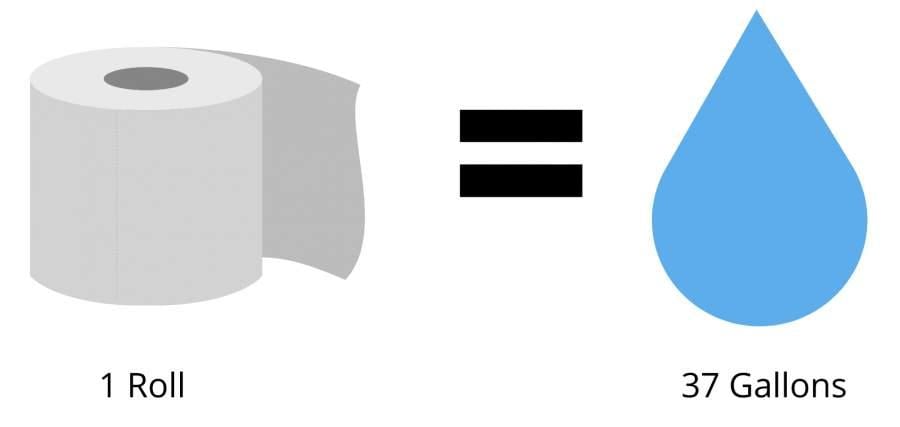
Another reason people like using bidets is because they’re more eco-friendly than toilet paper. Toilet paper manufacturing requires a lot of resources for a single-use product, while a bidet only uses a small amount of water per use.
There are some eco-friendly toilet paper options that are good to use for guests or for drying yourself after using the bidet.
Finally, if you live in a small space such as in an RV, large amounts of toilet paper can be cumbersome to store.
Installing a bidet means you only need to have one or two rolls on hand for guests. If this is you make sure to check out our guide to the best bidets for RVs.
